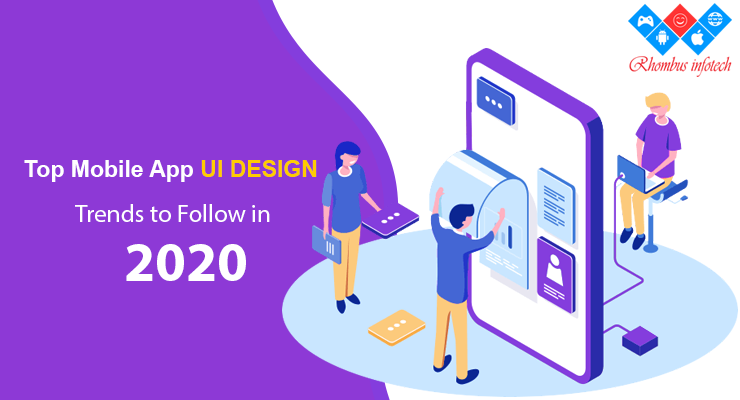It’s been over a decade since the first apps were introduced to the world in Apple’s App Store.
For businesses and developers to achieve success from their efforts in mobile app innovation and development, they must first identify what advancements and improvements in mobile app development are here to stay—and what advancements may carry long-term consequences if not acted upon.
A wise combination of these trends will lead to happier users, and ergo your product’s success.
1.The round-edged mobile phones
Most phones have lost their borders and have rounded edges. That changes their interface quite a bit. It will pose challenges for designers to use sharp-edged elements in their mobile UI and app design.
Moreover iPhones don’t have home buttons anymore and androids are also losing the on-screen buttons to save space for the displayed content.
To achieve a cleaner screen, the navigation relies on gestures which can also be a challenge designers have to face. It is a bold move to make users learn new navigation styles. That’s why adding visual hints or having an onboarding is crucial to help them understand the navigation process.
More and more platforms are implementing the Dark mode. Another thing to consider when designing a new platform next year.
2.Oversized, bold typography
Bold typography will hold its place in 2020. Moreover it’s only going to grow bigger.
Not only that it looks good, this eye-catching solution excites and shocks the visitors of a website, it also makes them spend more time on it.
Contrasting things look awesome together.
A sleek font pairing like a large heavy title matched with a smaller legible body text could stand it’s place on a website without any other overcrowding element. Sometimes less is truly more.
3.Asymmetrical Layouts
Tidy and traditional grid will take a backfoot and overlapping elements will come in the focus. Split screen are getting back to life with a twist of asymmetrical layout. There will be lost of overlaps and generous amount of whitespaces in the designs to make it a visual treat for the audience. All these elements combined together give a direction to viewers’ eyes in order to take them from a design element to another.
Asymmetric being an attention grabbing design technique creates the right kind of balance between the design and layout. However, while considering this Android app design trend for mobile app development, keep in mind to create the right kind of balance between white and negative space.
4.2D and 3D Illustration
2D and 3D designs with their complex motion bring life to the design. These designs bring a friendly experience to the users. Dynamics of 2D and 3D makes it easy to capture viewer’s attention with the details created while creating the designs. These dynamics help capture users attention and explains them the offering from the brand or by the company.
A detailed design illustration gives websites and apps their own unique personality while making them enjoyable for the viewers. Because of its vast illustration abilities, the designers need to be specific while representing their design for either the web or mobile apps.
5.Micro Interactions
2020 will be the year of micro-interaction, animation, logos, and texts thriving on web pages. All these elements will help users navigate through a page and reach easily to the sections like feedback form or other important details. Well-designed microinteractions are a sign that a website cares for its users and gives a positive impression about the brand in order to influence users’ action.
Swipe action on a web page or an app is a fine example of micro-interaction. For users, it eliminates the requirement of clicking on a tab or a link that obviously contributes towards users’ interaction with the website. With a swipe action users can easily shift from a tab to another swiftly.
6.Responsive colors
It has been around for a while now and brands have progressively been adopting it. You have probably seen it on Dropbox and Spotify and not that long ago Facebook has also implemented it to its company brand. Instead of owning a single symbolical color the brand is responsive to its context. It can be a number of predefined ones or a dynamic color system that takes on the color of its environment.
7.AR and VR
In 2020, web design trends will all involve thinking outside the box, or rather, the grid. We need to forget UI fixed to screens. Instead, we should emphasize interactions which feel like they take place within the real world environment. Google and Apple have already introduced their own AR development platforms, ARCore and AEKit, that blend the physical and digital worlds.
As we approach 2020, we’ll see even more widespread usage of these technologies, and a strong adoption of the trends mentioned above.

